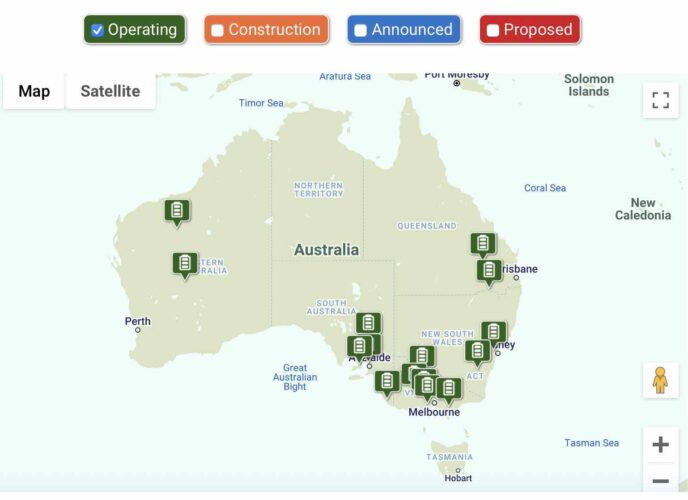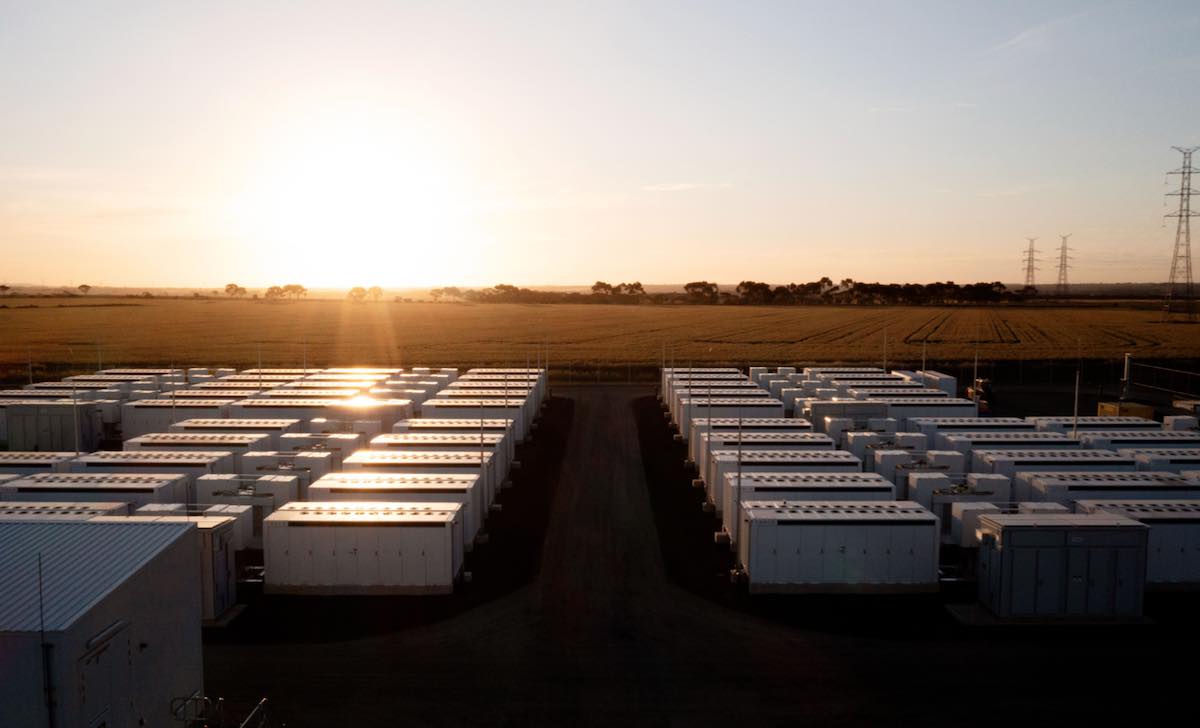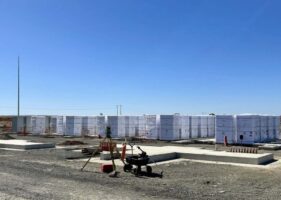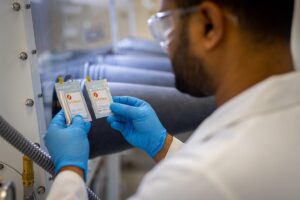The total capacity of big battery storage in Australia’s main grid has gone past one gigawatt with the recent addition of two new big batteries at Torrens Island and Hazelwood, but that number is expected to double and then treble in coming years.
The Torrens Island and Hazelwood batteries are not the biggest batteries to be added to the National Electricity Market, but in some ways they are significant because they are the first to be built at the site of flagship fossil fuel centres.
Torrens Island is where AGL has built its massive gas generation plants in South Australia, which it plans to transform into a clean energy hub, and Hazelwood was the site of the country’s dirtiest coal generator that was closed rapidly by French energy giant Engie.
It is also the first big battery to be deployed in Australia from the portfolio of Macquarie Group’s newly launched battery specialists Eku Energy.

Both these big batteries have begun their commissioning process with just one hour of storage, because they are focused largely on the grid services market – Torrens is the biggest battery in the world with grid forming inverter technology.
But both are likely to grow – to two, four or even more hours of storage – as the market for batteries and time shifting wind and solar expands. And this is where battery storage gets interesting, because developers and owners are starting to unlock more of the big stack of services that big batteries can bring to the grid.
If we cast our mind back to the original Tesla big battery, aka the Hornsdale Power Reserve, it was focused on two primary functions – meeting a contract with the state government and AEMO to provide grid support in case of a major disruption, and eating the cake that fossil fuel generators had created around the frequency control markets.
Hornsdale has since expanded to become the biggest in the world to deliver “synthetic” inertia with the aid of grid forming inverters, a technology that also forms the basis of Torrens Island, Wallgrove and other batteries about to be added to the grid.
The country’s biggest battery – the 300MW/450MWh Victoria Big Battery – took the grid back-up model to another level with a contract with the Victoria government and AEMO that turns it into a kind of giant shock-absorber that allows the main link from Victoria to NSW to operate at full capacity.
That technology is being taken to a new level with the planned 850MW, 1680MWh Waratah “super” battery that will deliver a similar function for the major population in NSW – Sydney, Newcastle and Wollongong – that will be crucial once the Eraring coal generator retires.

Tesla, which has largely led the charge in battery storage in Australia – but now faces increased competition from other providers – provided fascinating insight into the state of the battery market in a recent submission to Transgrid, where it is arguing that batteries can also deliver system strength services to that grid.
New sources of system strength will be needed as NSW continues to close down its ageing coal fired power generators – it now has four left: Eraring, Vales Point, Mt Piper and Bayswater. Tesla and others argue that batteries can do that job.
The graph above shows how the tool-kit of battery storage in Australia has already been unlocked as the market develops, from regulation and contingency frequency control, and energy arbitrage, to the newly formed fast frequency response market, and possibly to system strength, congestion relief and operating reserve.
The mechanisms to support them are also being expanded – from direct contracts with state governments and AEMO and grants from the likes of ARENA, to the long term service agreements (LTESAs) being offered by NSW and the Capacity Investment Scheme to be introduced at the end of the year.
The LTESAs have already delivered a breakthrough in the battery storage market in Australia, with the awarding of a contract to the country’s, and likely the world’s, first eight hour battery – a 50MW/400MWh facility to be built next to the Limondale solar farm in NSW by German energy giant RWE.
That presents a massive leap in storage terms. The longest duration battery built to date has been two hours, and suddenly it has leaped to four times that length – although that is largely because the battery is being paid to deliver a specific service.
Other batteries, such as Neoen’s 200MW/400MWh Blyth battery in South Australia, are being built with other specific tasks in mind, in its case balancing the output of the massive Goyder South wind farm to provide a 24/7 renewables power supply to BHP’s huge Olympic Dam mine.
It is also nearing completion of the 100MW/200MWh Capital battery in Canberra.
In the meantime, big batteries such as Hazelwood and Torrens Island – and other big batteries to be built at other fossil fuel flagship centres such as Eraring, Kogan Creek, Stanwell, Mt Piper, Liddell, Collie and Loy Yang – will be steadily expanded to two, four and more hours of storage.
The list of new batteries that are either under construction or regarded as “committed” continues to grow.
Neoen is also building the 200MW/400MWh battery next to the Western Downs solar farm, Acen is building a battery next to the New England solar farm, now Australia’s biggest committed solar project, and Edify is building the 150MW/300MWh Darlington Point facility (actually three separate batteries).
Genex is also putting the finishing touches to the 50MW/100Mwh Bouldercombe battery in Queensland, AGL is also nearing completion of the 50MW/50MWh Broken Hill battery, while the next battery to join the grid is expected to be the 41MW/41MWh Tailem Bend solar farm next to the solar farms of the same name.
Others to be built soon include the 200MW/400MWh Rangebank battery to be built by Eku Energy and Shell in Victoria, while Eku Energy has also won the mandate to built the 250MW/500MWh Big Canberra battery near the national capital.
RenewEconomy’s big battery storage map points to dozens of other battery projects either at the “proposed” or “announced stage.”










